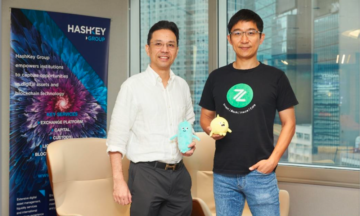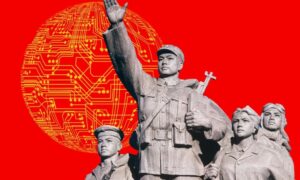
Hong Kong Exchanges and Clearing said on December 15 it was not renewing the three-year contract of its CEO, Nicolas Aguzin, when it expires in May 2024.
His single term in office coincided with macro headwinds – economic downturns, geopolitical tensions, Beijing political campaigns – that were beyond the ability of HKEX to control.
But Aguzin – or “Gucho”, as he likes to be called – has also left the exchange’s technology strategy at sea. He, and the board he reports to, have not developed its data services to provide a counter-cyclical buffer for when revenues from primary listings dry up, and have not formulated a strategy for digital assets.
The new leadership team needs to prioritize streamlining and expanding the tech stack if HKEX is to rank among the top tier of global exchanges.
The CEO’s mandate
Aguzin joined as CEO in May, 2021 from J.P. Morgan, where he had been CEO of Asia Pacific and then of its international private bank. An Argentine with presidential hair and a banker’s smooth confidence, but who doesn’t speak Chinese, he was a good choice when the idea of the role was to expand HKEX’s businesses and clientele throughout the Global South.
In other words, the board, chaired by Laura Cha, seemed to take HKEX’s extraordinary success in primary listings for granted. A CEO like Gucho was there for conquering new worlds.
What might that look like? Aguzin made plenty of speeches about his vision for China’s capital markets growing to $100 trillion in capitalization within ten years, assuming steady growth of the mainland economy and the shift of household wealth from savings and property to stocks and bonds.
HKEX’s role would be to leverage the Greater Bay Area to turn its retail market from serving a population of 7 million to one of 86 million, including via initiatives launched by Aguzin’s predecessor such as Stock Connect.
“Humanity has never seen that capital-market value creation in securities,” he said in 2022 during one of several times DigFin heard him speak.
Unfortunately, humanity is still waiting. Perhaps the vision is correct and Aguzin had the bad luck of seeing his term derailed by Covid, China’s tech crackdown, and worsening tensions with the US. The board, though, decided Aguzin wouldn’t be the person to realize the dream.
Outpaced
His term ends on a humiliating note, with India’s National Stock Exchange overtaking HKEX’s market size in November, valued at $3.989 trillion versus Hong Kong’s $3.984 trillion.
One of the reasons NSE is now bigger is that its tech stack enables round-trip trades that can be counted in microseconds. It is becoming a popular venue for high-frequency traders and other quants. These players generate a lot of liquidity.
Hong Kong can’t compete for this kind of money for two reasons. One is out of HKEX’s hands: the government imposes a 25-basis point stamp duty on equity trades. But the other reason is that, were the government to scrap this tax (unlikely, but still), HKEX’s systems couldn’t keep up with the real-time data feeds that algorithmic traders require.
That’s according to technology vendors and consultants who spoke with DigFin on background. This points to a big mess behind the scenes at HKEX. It’s not just one mess, though, it’s three.
Omega
First is data. Second is systems integration. Third is digital.
‘Project Omega’ is the internal name for the data warehouse and data streaming. HKEX has grown through acquisition, so data for various businesses lives in different formats. This hampers the effectiveness of monetizing data through services.
Other changes are well ahead in terms of data and connectivity contribution to revenues. For US firms such as New York Stock Exchange and Nasdaq, data-related business count for up to a third of revenues. The figure is now 17 percent at SGX.
But in 2022, HKEX reported data and connectivity contributed to only 5.9 percent of revenues. That was up from its lowest point in 2021 (when data comprised only 4.9% of reveneus), but that increase is because other sources of revenues, such as listing fees, fell. Overall the picture is one of neglect: data accounted for 6.5 percent of revenues back in 2017.
“The exchange hasn’t diversified,” says a consultant. “There’s no culture of fostering innovation or using data, while US exchanges have doubled down on non-core technology businesses.”
Orion
The second, related, mess is integration. Because of HKEX’s history of building off acquisitions, it continues to manage separate matching engines for its cash and its futures arms.
The cash arm relies on a Nasdaq system, while the futures arm uses Orion Trading Platforms, which HKEX has customized extensively.
A longstanding internal project called ‘Project Orion’ is meant to shift the cash business off Nasdaq and integrate it onto Orion. Inertia, legacy relationships and fears of executives losing jobs or turf have bogged this down.
In December 2021, Aguzin brought in a J.P. Morgan colleague, John Buckley, first as head of operations and transformation, and then as co-chief operating officer. Sources say Buckley’s mission was to radically overhaul tech and operations. He reportedly wanted to bring in KX Systems, the relational database provider used by Citadel – where Buckley had also served as Asia COO.
For whatever reason, these initiatives didn’t go anywhere, and Buckley left after only one year.
One vendor suggests the price tag of a full-blown transition of core systems scared the board, noting such a move could cost anywhere from $15 million to $25 million.
The picture isn’t all negative. HKEX in November rolled out a new settlement system for primary listings, called FINI, for Fast Interface for New Issuance. This moves settlement from T+5 to T+2 for any new IPOs. It was originally slated for 2021 (as a T+1 solution), then 2022. Now it’s here, with more automation. Good, but how good, given the US is moving to T+1 in May 2024?
Digital
The third mess at HKEX is digital, specifically blockchain-based tech. The exchange has achieved one success, Synapse, a blockchain-based tool to smooth the way for US-based institutional investors to participate in Northbound flows of Stock Connect, the pipes that enable mainland and Hong Kong investors to trade each other’s shares. Synapse was expensive; given the macro environment, flows through StockConnect have been disappointing.
Over time, Synapse may prove its worth. But it was achieved in isolation, to solve a particular problem.
This seems like a missed opportunity given the Hong Kong government’s recent embrace of digital assets. The Securities and Futures Commission has now licensed seven virtual-asset service providers. The Hong Kong Monetary Authority is weighing a strategy for stablecoins.
Sources familiar with HKEX say its executives are justifiably keen to avoid the costly and humiliating failures at Australia Stock Exchange, which for years labored to replace its post-trade infrastructure with a blockchain-based design. HKEX can point to FINI as evidence it has updated its post-trade systems in a sensible manner.
But FINI is still ‘TradFi’ tech. HKEX has also ignored successes with next-generation digital tech at Depository Trust and Clearing Corporation, Chicago Board of Exchange, CME, and the acquisition by NYSE’s parent, Intercontentinal Exchanges and Clearing, of stakes in Coinbase, Bakkt, and Black Knight, a mortgage-tech business.
One part of HKEX’s infrastructure that could be transformed is its corporate registry, which today is paper-based. Were HKEX to digitize this, it could set the stage for a wave of tokenization (which FINI cannot do). But there is no internal cohesion on such matters, according to vendors and consultants, and no strategy.
No Plan B
Sources paint a picture overall of an organization that has no Plan B should primary listings from mainland China hit a dry spell. There is no guarantee that the macro picture will improve in 2024.
“Tech is the heart of their problem,” says a vendor. “They’ve tried to invest in different things but can’t stick to a plan. This is what’s keeping HKEX in the second tier [of global exchanges].”
Efforts to modernize technology have been half-hearted and focused on projects such as Synapse that help extend the core listings business. Integration projects get tangled in internal politics. A cadre of managing directors, perhaps fearing their jobs, aren’t aligned. Owners of various systems and data stores too focused on defending their turf.
To whatever extent Aguzin thought about tech, he wasn’t able to create a vision that key executives could buy into, nor a culture that executes well on existing projects such as systems integration and heavy lifts like Orion. Key people who were brought into the organization to effect change haven’t lasted long. Maybe Aguzin was too much of an outsider to drive such change internally; or his remit was always on growing a primary-markets business at a time when that became untenable.
A new chance
The good news for HKEX is that there’s no reason why it can’t put resources behind a comprehensive upgrade of its tech stack. The digital movement is still nascent, so there’s time for HKEX to wade into the space. Big projects such as the transition to Orion, however, need leaders that know how to work constructively with management, and they need the support of the board. Aguzin’s exit and that of Laura Cha as chairwoman, set for April, gives HKEX an opportunity.
The incoming new leadership is held in high regard, according to sources.
Bonnie Chan Yiting will become the new CEO. Her background is legal: she joined in 2020 after serving as partner at Davis Polk & Wardell. On the one hand, she has only been at HKEX a little longer than Aguzin, serving first as head of listings and then co-COO. But she’s not an outsider: she was HKEX’s head of IPO transactions in the listing group from 2007 to 2010.
Chan will be supported by Wilfred Yiu Ka-yan, who will become deputy CEO after having served alongside her as co-COO. Yiu will be the key figure in any tech or digital transformation, particularly the integration of matching engines. He retains two CEO roles within the organization, heading The Stock Exchange of Hong Kong and the Hong Kong Futures Exchange. Before joining HKEX in 2019, he was a Goldman Sachs executive, serving as deputy CEO of its mainland China partner, Beijing Gao Hua Securities, as well as an earlier role as managing director of Goldman’s Fixed Income, Currencies and Commodities business.
The third elevated leader is Vanessa Lau, the group CFO; she will continue in that role as well as become co-COO.
Sources tell DigFin it is probably good that the trio is not from the IT and operations arms of the group. They have an opportunity to formulate a strategy that they can present to whoever chairs the board.
HKEX has been enormously successful at serving as the global exchange for mainland companies. This has been central to Hong Kong’s role as a platform for China’s economy; it’s the raison d’être for the territory.
In all aspects, Hong Kong is better served if HKEX modernizes its tech stack, positions itself as a serious player in data, builds the infrastructure to attract liquidity providers, positions itself as the world’s biggest platform for digital assets, and diversifies its business to ride out inevitable downturns.
- SEO Powered Content & PR Distribution. Get Amplified Today.
- PlatoData.Network Vertical Generative Ai. Empower Yourself. Access Here.
- PlatoAiStream. Web3 Intelligence. Knowledge Amplified. Access Here.
- PlatoESG. Carbon, CleanTech, Energy, Environment, Solar, Waste Management. Access Here.
- PlatoHealth. Biotech and Clinical Trials Intelligence. Access Here.
- Source: https://www.digfingroup.com/gucho-hkex/
- :has
- :is
- :not
- :where
- ][p
- $3
- $UP
- 15%
- 17
- 2010
- 2017
- 2019
- 2020
- 2021
- 2022
- 2024
- 7
- 9
- a
- ability
- Able
- About
- According
- accounted
- achieved
- acquisition
- acquisitions
- After
- ahead
- algorithmic
- aligned
- All
- alongside
- also
- always
- among
- an
- and
- any
- anywhere
- April
- ARE
- AREA
- Argentine
- ARM
- arms
- AS
- asia
- asia pacific
- aspects
- Assets
- At
- attract
- Australia
- authority
- Automation
- avoid
- b
- back
- background
- Bad
- Bakkt
- Bank
- Bay
- BE
- became
- because
- become
- becoming
- been
- before
- behind
- behind the scenes
- Beijing
- Better
- Beyond
- Big
- bigger
- Biggest
- Black
- blockchain-based
- board
- bogged
- Bonds
- bring
- brought
- buffer
- Building
- builds
- business
- businesses
- but
- buy
- by
- called
- Campaigns
- CAN
- cannot
- capital
- Capital Markets
- capitalization
- Cash
- central
- ceo
- cfo
- chan
- change
- Changes
- chicago
- China
- Chinas
- chinese
- choice
- Citadel
- Clearing
- clientele
- CME
- cohesion
- coinbase
- coincided
- colleague
- commission
- Commodities
- Companies
- compete
- comprehensive
- Comprised
- confidence
- Connect
- Connectivity
- consultant
- consultants
- continue
- continues
- contract
- contributed
- contribution
- control
- coo
- Core
- Corporate
- CORPORATION
- correct
- Cost
- costly
- could
- Covid
- Crackdown
- create
- creation
- Culture
- currencies
- customized
- data
- data warehouse
- Database
- Davis
- December
- december 2021
- decided
- Defending
- depository
- deputy
- Design
- developed
- different
- DigFin
- digital
- Digital Assets
- Digital Transformation
- digitize
- Director
- Directors
- disappointing
- diversified
- do
- Doesn’t
- doubled
- down
- downturns
- dream
- drive
- dry
- during
- each
- Earlier
- Economic
- economy
- effect
- effectiveness
- elevated
- embrace
- enable
- enables
- ends
- Engines
- enormously
- Environment
- equity
- Ether (ETH)
- evidence
- exchange
- Exchanges
- Executes
- executive
- executives
- existing
- Exit
- Expand
- expanding
- expensive
- extend
- extensively
- extent
- extraordinary
- failures
- familiar
- FAST
- fears
- Fees
- Figure
- firms
- First
- fixed
- fixed income
- Flows
- focused
- For
- fostering
- from
- Futures
- futures exchange
- GAO
- generate
- geopolitical
- get
- given
- gives
- Global
- Go
- goldman
- Goldman Sachs
- good
- Government
- granted
- greater
- Greater Bay Area
- Group
- Growing
- grown
- Growth
- guarantee
- had
- Hair
- hand
- Hands
- Have
- having
- he
- head
- Heading
- headwinds
- heard
- Heart
- heavy
- Held
- help
- her
- here
- High
- High-Frequency
- him
- his
- history
- Hit
- HKEx
- Hong
- Hong Kong
- Hong Kong Monetary Authority
- household
- How
- How To
- However
- HTTPS
- Humanity
- idea
- if
- improve
- in
- Including
- Income
- Incoming
- Increase
- inertia
- inevitable
- Infrastructure
- initiatives
- Innovation
- Institutional
- institutional investors
- integrate
- integration
- Interface
- internal
- internally
- International
- into
- Invest
- Investors
- IPO
- IPOs
- isolation
- issuance
- IT
- ITS
- itself
- J.P. Morgan
- Jobs
- John
- joined
- joining
- jpg
- just
- just one
- Keen
- Keep
- keeping
- Key
- Kind
- Knight
- Know
- Kong
- Kx
- Lau
- launched
- leader
- leaders
- Leadership
- left
- Legacy
- Legal
- Leverage
- Licensed
- like
- likes
- Liquidity
- liquidity providers
- listing
- Listings
- little
- Lives
- Long
- longer
- longstanding
- Look
- look like
- losing
- Lot
- lowest
- luck
- Macro
- macro environment
- made
- mainland
- mainland china
- manage
- management
- managing
- Managing Director
- manner
- Market
- Markets
- matching
- Matters
- May 2024
- May..
- maybe
- meant
- might
- million
- missed
- Mission
- modernize
- Monetary
- monetary authority
- money
- more
- Morgan
- move
- movement
- moves
- moving
- much
- name
- nascent
- Nasdaq
- National
- Need
- needs
- negative
- never
- New
- New CEO
- New York
- New York Stock Exchange
- news
- next-generation
- Nicolas
- Nicolas Aguzin
- no
- nor
- note
- noting
- November
- now
- of
- off
- Office
- Officer
- on
- ONE
- only
- operating
- Operations
- Opportunity
- or
- organization
- originally
- Other
- out
- overall
- Overhaul
- owners
- Pacific
- paint
- paper-based
- part
- participate
- particular
- particularly
- partner
- People
- percent
- perhaps
- person
- picture
- pipes
- plan
- Plan B
- platform
- Platforms
- plato
- Plato Data Intelligence
- PlatoData
- player
- players
- Plenty
- Point
- points
- political
- politics
- Popular
- population
- positions
- post-trade
- predecessor
- present
- presidential
- price
- primary
- Prioritize
- private
- probably
- Problem
- project
- projects
- property
- Prove
- provide
- provider
- providers
- put
- radically
- rank
- real-time
- real-time data
- realize
- reason
- reasons
- recent
- regard
- registry
- related
- Relationships
- replace
- Reported
- reportedly
- Reports
- require
- Resources
- retail
- RETAIL MARKET
- retains
- revenues
- Ride
- Role
- roles
- Rolled
- Sachs
- Said
- Savings
- say
- says
- scared
- scenes
- SEA
- Second
- Securities
- Securities and Futures Commission
- seeing
- seemed
- seems
- seen
- separate
- serious
- served
- service
- service providers
- Services
- serving
- set
- settlement
- seven
- several
- SGX
- Shares
- she
- shift
- should
- single
- Size
- smooth
- So
- solution
- SOLVE
- Sources
- South
- Space
- speak
- specifically
- speeches
- SPELL
- Stablecoins
- stack
- Stage
- stakes
- stamp
- steady
- Stick
- Still
- stock
- Stock Exchange
- Stocks
- Stocks and Bonds
- stores
- Strategy
- streaming
- streamlining
- success
- successes
- successful
- such
- Suggests
- support
- Supported
- Synapse
- system
- Systems
- TAG
- Take
- tax
- team
- tech
- Technology
- Technology Strategy
- tell
- ten
- tensions
- term
- terms
- territory
- than
- that
- The
- their
- then
- There.
- These
- they
- things
- Third
- this
- though?
- thought
- three
- Through
- throughout
- tier
- time
- times
- to
- today
- Tokenization
- too
- tool
- top
- trade
- Traders
- trades
- Trading
- Trading Platforms
- Transactions
- Transformation
- transformed
- transition
- tried
- Trillion
- trio
- Trust
- TURN
- two
- unlikely
- updated
- upgrade
- us
- used
- uses
- using
- value
- value creation
- valued
- various
- vendor
- vendors
- Venue
- Versus
- via
- vision
- Waiting
- wanted
- Warehouse
- was
- Wave
- Way..
- Wealth
- weighing
- WELL
- were
- whatever
- when
- which
- while
- WHO
- whoever
- why
- will
- with
- within
- without
- words
- Work
- world’s
- worth
- would
- year
- years
- york
- zephyrnet












